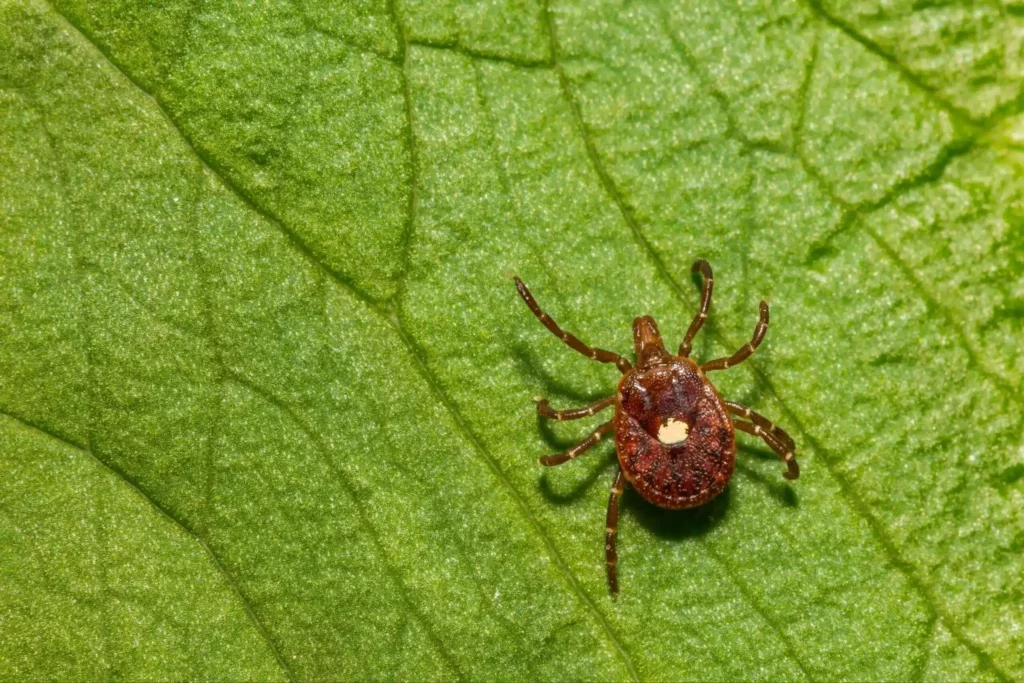Tick Pest Control
Get tick pest control customized for your property. We target ticks at every stage—from larval to adult—so you can enjoy your yard without worrying about surprise bites.

Why choose Hawx for pest control?
Customized
- • Treatment tailored to your needs
- • Plans to meet your budget
- • Comprehensive, ongoing service for the most effective pest control
Tech-driven
- • Latest products and technology
- • Environmentally friendly
- • Smart service report included
Free follow-up service
If pests come back between treatments, so will we—at no additional cost to you.
See what our customers say about us

“Luckily, ticks are not generally found in the lawn itself. They generally sit a few feet off the ground on top of tall natural grasses that are 3-5 feet high. They sit there with their front legs sticking out, waiting for something to pass by!
To prevent tick problems, keep your shrubbery and grass low, clean, and dry. The Hawx tick treatment plan focuses on those areas. ”
Vice President of Technical & Training Services, Entomologist
Pest Control for Ticks: How it Works
- Detailed Yard Inspection
A Hawx technician walks property perimeters, tall grass, and shady brush to map hotspots and host pathways. This evaluation guides a precise tick treatment strategy and ensures products are applied only where they’ll deliver maximum impact.
- Landscape and Habitat Fixes
We trim overgrown vegetation, recommend leaf‑litter removal, and seal gaps under decks—simple adjustments that deny ticks shade and moisture while supporting long‑term tick control.
- Liquid Foliage Application
Using a backpack mister, we coat tall grasses, shrubs, and your pets’ hangout areas with a residual product. It adheres to leaves and kills ticks as soon as they climb upward in search of passing hosts, quickly blocking any emerging tick infestation.
- Perimeter Treatment
Dense brush and lawn edges receive a targeted granule that eliminates ticks hiding near transition areas, creating an outdoor barrier that complements the liquid spray for comprehensive tick pest control.
Please note that our tick pest control service is available as a specialized add-on to your existing General Pest Control (GPC) plan. With this add-on, you get targeted treatments for ticks while still benefiting from the comprehensive coverage of our GPC plan.

What to Expect with Hawx Tick Treatments

From the moment you schedule Hawx’s tick service, we keep the process clear and straightforward.
- First, your technician confirms the appointment and sends a brief prep list—like mowing high grass in your yard—to help the products reach your soil and foliage.
- On service day, we begin with a full inspection, then apply liquid treatments to vegetation and granules to dense ground cover, reducing ticks at every life stage. If we spot structural gaps or clutter that shelter parasites, we will suggest some quick fixes to discourage re‑infestation.
3. Each visit wraps up in about an hour and is family and pet‑friendly once dry. You’ll receive a digital report with photos, habitat recommendations, and the timeline for follow‑up sprays that keep ticks in check. Should new tick activity show up, Hawx returns at no extra charge, giving you reliable tick removal and a yard you can enjoy all season long.
Hawx makes getting rid of ticks easy and stress-free from start to finish. Our licensed technicians combine advanced tech with science‑backed products to target ticks where they hide and completely disrupt their life cycle. We tailor each treatment plan to your property’s layout, eliminating active infestations and helping prevent future flare‑ups so you can actually relax in your yard without worry.
Ready to keep ticks off your family and pets throughout the season? Contact Hawx today for a free estimate and experience why so many homeowners trust our tick control specialists.
FAQs
How do ticks get into my yard?
Ticks hitch rides on animals like deer, squirrels, and neighborhood pets that wander through tall grass or brush. Once underway, a small tick infestation can grow quickly in shady, moist areas like leaf litter or dense garden beds and eventually make it into your home.
Are ticks dangerous to people and pets?
Yes. Ticks can transmit Lyme disease, Rocky Mountain spotted fever, and other illnesses to humans, dogs, and cats. Professional tick pest control greatly reduces the chance of bites and the health risks that come along with them.
What can I do between visits to keep ticks away?
Keep grass trimmed, remove leaf litter, and discourage wildlife from hanging around your yard by securing trash and any fallen fruit or vegetables. These steps help make your property far less inviting to ticks during all seasons.
Read more about Tick Facts

How to Get Rid of Ticks in Your House
Small and persistent, ticks can enter your home by hitching a ride on pets or people who unknowingly carry ticks on their clothing, shoes, or

Tick Talk: A Step-by-Step Guide on How To Remove Ticks
Tick Talk: A Step-by-Step Guide on How To Remove Ticks Picture yourself on a glorious hike in the great outdoors, breathing in the fresh air

Common Household Pests in Chicago: Identification and Prevention
Have you found yourself in a constant battle against pesky household pests? As homeowners, it’s our responsibility to keep our homes free from these unwanted
Visit the pest library to learn more.


